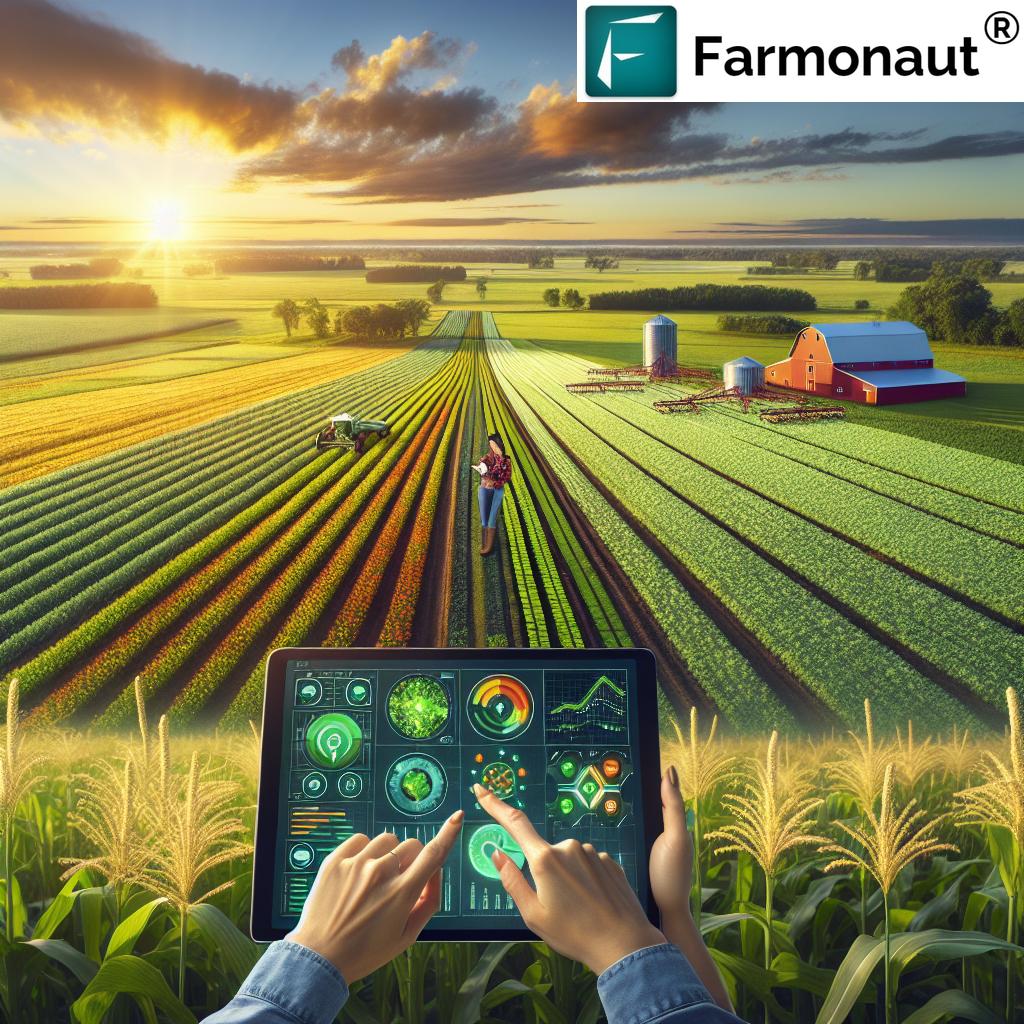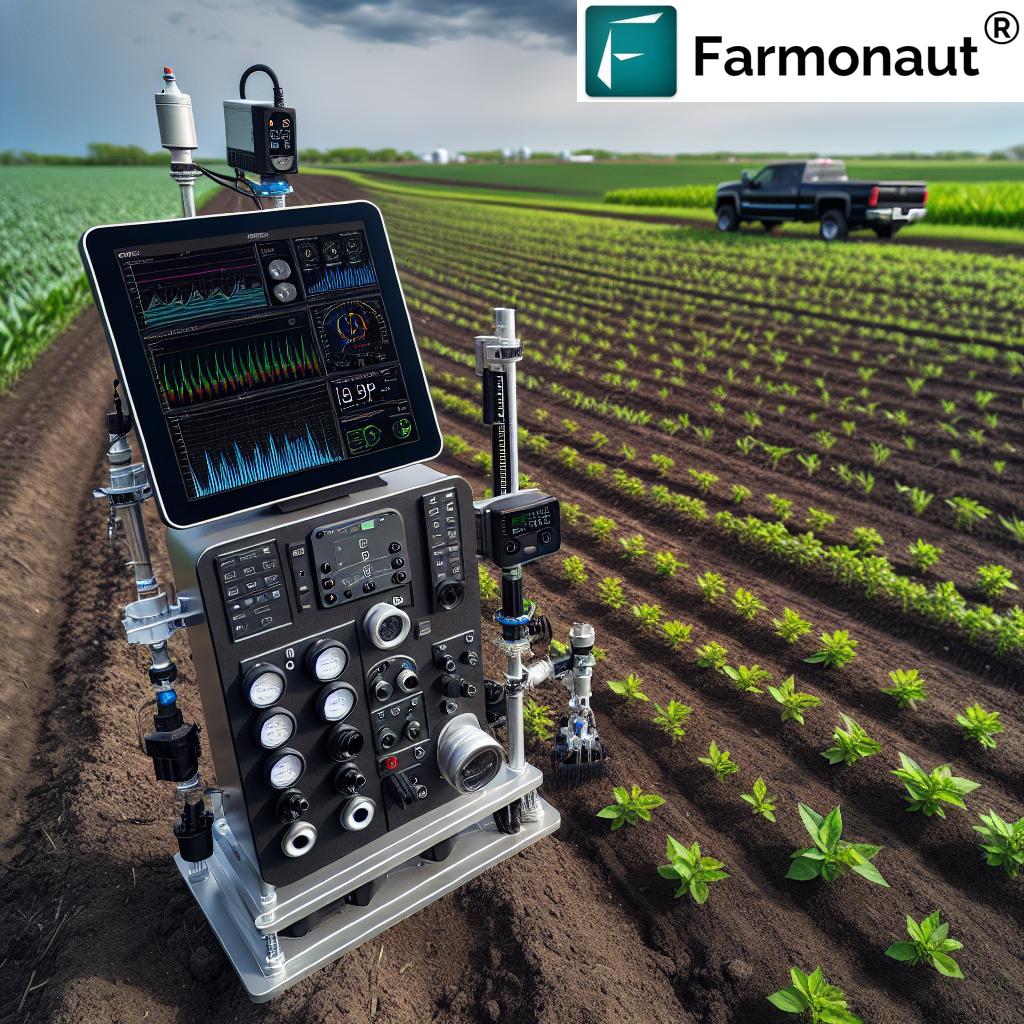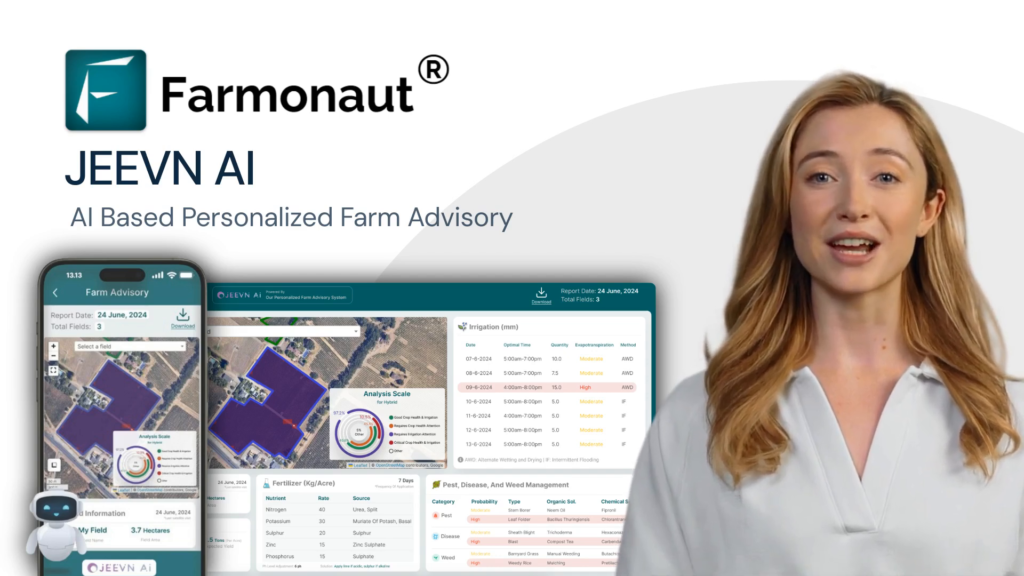Elevate Your Minnesota Farm: Precision Agriculture Techniques for Sustainable Crop Nutrition Management
“Minnesota farmers using precision agriculture techniques can reduce fertilizer use by up to 30% while maintaining crop yields.”
Welcome, Minnesota farmers, ranchers, and agricultural enthusiasts! We’re thrilled to share with you the latest innovations in sustainable agriculture practices and precision farming techniques that are revolutionizing crop nutrition management and soil health monitoring. As we delve into the world of smart farming, we’ll explore how local producers can harness the power of agricultural drone mapping and data analytics to optimize yields while promoting environmental stewardship.

The Evolution of Farming in Minnesota
Minnesota’s agricultural landscape has been evolving rapidly, with local farmers and ranchers embracing innovative techniques to enhance productivity while maintaining the health of their land. From the rolling prairies to the fertile valleys, our state’s diverse geography presents unique challenges and opportunities for crop nutrition management.
As we face the pressures of climate change and the need for increased food production, it’s crucial that we, as producers, adapt our methods to ensure long-term sustainability. This is where precision agriculture technology comes into play, offering us tools to make more informed decisions about our farming practices.
Understanding Precision Agriculture
Precision agriculture is a farming management concept that uses information technology to ensure that crops and soil receive exactly what they need for optimum health and productivity. By leveraging technologies such as GPS, sensors, robotics, and data analytics, we can tailor our farming practices to the specific needs of each part of our fields.
- Increased efficiency in resource use
- Reduced environmental impact
- Enhanced crop yields
- Improved farm profitability
One of the key players in this technological revolution is Farmonaut, a company dedicated to making precision agriculture accessible to farmers worldwide. Through their innovative platform, we can access valuable services like real-time crop health monitoring and AI-based advisory systems.
Explore Farmonaut’s precision agriculture solutions:
Crop Nutrition Management: A Cornerstone of Sustainable Farming
Effective crop nutrition management is essential for maintaining healthy soils and producing high-quality yields. In Minnesota, where we grow a diverse range of crops from corn and soybeans to wheat and sugar beets, understanding the unique nutritional needs of each plant is crucial.
Traditional methods of crop nutrition often relied on blanket applications of fertilizers across entire fields. However, this approach can lead to over-fertilization in some areas and under-fertilization in others, resulting in inefficient use of resources and potential environmental issues.
With precision agriculture techniques, we can now:
- Analyze soil health with pinpoint accuracy
- Create variable-rate fertilizer application maps
- Monitor crop nutrient uptake in real-time
- Adjust nutrition strategies based on plant health indicators
Leveraging Agricultural Drone Mapping for Nutrient Management
One of the most exciting developments in precision agriculture is the use of agricultural drone mapping. These unmanned aerial vehicles equipped with multispectral cameras can provide us with detailed insights into our fields that were previously impossible to obtain.
Here’s how drone mapping is transforming crop nutrition management:
- Detailed Soil Analysis: Drones can capture high-resolution images of our fields, allowing us to identify variations in soil composition and moisture levels.
- Crop Health Assessment: By analyzing the spectral signatures of plants, we can detect nutrient deficiencies before they become visible to the naked eye.
- Precision Application: With accurate maps of our fields, we can create targeted fertilizer application plans, ensuring each area receives the right amount of nutrients.
- Monitoring Progress: Regular drone surveys allow us to track the effectiveness of our nutrition strategies and make adjustments as needed.
Farmonaut’s platform integrates seamlessly with drone technology, allowing us to upload and analyze drone imagery alongside satellite data for comprehensive field insights.
Soil Health Monitoring: The Foundation of Sustainable Agriculture
“Sustainable crop nutrition management can increase soil organic matter by 1-2% over 3-5 years, improving water retention.”
Healthy soil is the backbone of any successful farm. In Minnesota, where we experience a range of soil types from rich prairie soils to sandy loams, understanding and maintaining soil health is paramount. Precision agriculture offers us new tools for soil health monitoring that go beyond traditional soil testing methods.
Key aspects of soil health monitoring include:
- Organic matter content
- Soil structure and compaction
- Microbial activity
- Water retention capacity
- Nutrient availability
By using sensors and data analytics, we can now track these factors in real-time, allowing us to make proactive decisions about soil management. This is particularly important for Minnesota farmers dealing with the challenges of erosion and nutrient runoff, which can impact our state’s numerous lakes and rivers.
Farmonaut’s platform offers advanced soil health monitoring capabilities, integrating data from various sources to provide a comprehensive view of soil conditions across our farms.
Discover Farmonaut’s soil health monitoring tools:
Smart Farming Techniques for Minnesota’s Diverse Agricultural Landscape
Minnesota’s agricultural sector is known for its diversity, from the vast corn and soybean fields of the southern plains to the specialty crops and dairy farms of the central and northern regions. Smart farming techniques allow us to tailor our approaches to the specific needs of each crop and region.
Some smart farming techniques that are particularly relevant for Minnesota farmers include:
- Variable Rate Technology (VRT): Adjust seed, fertilizer, and pesticide application rates based on field variability.
- Precision Irrigation: Use soil moisture sensors and weather data to optimize water use, especially important for our high-value crops like vegetables and fruits.
- Yield Mapping: Create detailed maps of crop yields to identify areas of high and low productivity within fields.
- Automated Guidance Systems: Reduce overlap and improve efficiency in field operations, particularly beneficial for our larger farms.
These techniques not only improve our productivity but also contribute to the sustainability of our farming practices, aligning with the growing consumer demand for environmentally responsible food production.

The Role of Agricultural Data Analytics in Farm Management
In today’s digital age, data is king, and agriculture is no exception. Agricultural data analytics is revolutionizing the way we manage our farms, providing insights that were once unimaginable. By collecting and analyzing vast amounts of data from various sources, we can make more informed decisions about every aspect of our operations.
Key benefits of agricultural data analytics include:
- Predictive modeling for crop yields and market trends
- Early detection of pest and disease outbreaks
- Optimization of resource allocation
- Improved financial planning and risk management
Farmonaut’s platform excels in this area, offering powerful analytics tools that turn complex data into actionable insights. Their AI-powered advisory system, Jeevn AI, provides personalized recommendations based on real-time data analysis.
Explore Farmonaut’s data analytics capabilities:
Farmonaut API | API Developer Docs
Sustainable Ranching Methods: Integrating Precision Agriculture in Livestock Production
While much of the focus on precision agriculture is on crop production, sustainable ranching methods are also benefiting from these technologies. For Minnesota’s cattle ranchers and dairy farmers, precision agriculture offers new ways to manage pastures, monitor animal health, and optimize feed production.
Some applications of precision agriculture in ranching include:
- Pasture management with satellite imagery and drones
- GPS tracking of livestock for rotational grazing
- Automated feeding systems based on individual animal needs
- Remote health monitoring of cattle
By adopting these methods, our ranchers can improve animal welfare, increase productivity, and reduce the environmental impact of livestock operations. This aligns with the growing consumer interest in sustainably raised meat and dairy products.
The Local Farm-to-Table Movement and Precision Agriculture
The local farm-to-table movement has gained significant momentum in Minnesota, with consumers increasingly seeking out fresh, locally produced food. Precision agriculture plays a crucial role in supporting this movement by enabling farmers to produce high-quality crops more efficiently and sustainably.
Benefits for local farmers include:
- Improved crop quality through precise management
- Extended growing seasons with data-driven decision making
- Reduced waste and increased marketable yields
- Enhanced traceability for consumer confidence
By leveraging precision agriculture technology, we can strengthen the connection between our farms and local consumers, contributing to a more resilient and sustainable food system in Minnesota.
Implementing Precision Agriculture on Your Minnesota Farm
Adopting precision agriculture techniques may seem daunting, but with the right approach, it can be a smooth transition for farms of all sizes. Here are some steps to get started:
- Assess Your Needs: Identify the specific challenges on your farm that precision agriculture could address.
- Start Small: Begin with one or two technologies and gradually expand as you become more comfortable.
- Invest in Education: Take advantage of workshops, webinars, and resources offered by agricultural extension services and companies like Farmonaut.
- Collaborate: Connect with other farmers who are using precision agriculture to share experiences and best practices.
- Utilize Available Tools: Explore platforms like Farmonaut that offer comprehensive solutions for precision agriculture implementation.
Remember, precision agriculture is not about replacing traditional farming wisdom but enhancing it with modern technology. By combining our generations of farming knowledge with innovative tools, we can create a more sustainable and productive agricultural sector in Minnesota.
Precision Agriculture Techniques Comparison
| Farming Aspect | Traditional Method | Precision Agriculture Technique | Benefits of Precision Method | Estimated Yield Improvement (%) | Estimated Cost Savings (%) | Environmental Impact |
|---|---|---|---|---|---|---|
| Soil Analysis | Periodic field-wide sampling | Grid or zone sampling with GPS | More accurate nutrient mapping | 5-10 | 10-15 | Medium |
| Fertilizer Application | Uniform rate across field | Variable rate application | Optimized nutrient use | 10-15 | 15-20 | High |
| Crop Monitoring | Visual inspection | Drone and satellite imagery | Early detection of issues | 7-12 | 8-12 | Medium |
| Irrigation | Scheduled watering | Sensor-based precision irrigation | Water conservation | 15-20 | 20-30 | High |
| Pest Control | Whole field treatment | Targeted spot treatment | Reduced chemical use | 5-8 | 25-35 | High |
The Future of Farming in Minnesota
As we look to the future, it’s clear that precision agriculture will play an increasingly important role in Minnesota’s farming landscape. From small family farms to large agricultural operations, the adoption of smart farming techniques will be crucial for maintaining our state’s position as a leader in agricultural production.
Some trends we can expect to see in the coming years include:
- Increased integration of artificial intelligence in farm management
- Expansion of IoT (Internet of Things) devices for real-time monitoring
- Greater emphasis on sustainable practices to meet consumer demands
- Advancements in crop genetics tailored for precision agriculture systems
By embracing these technologies and techniques, we can ensure that Minnesota’s agricultural sector remains vibrant, productive, and sustainable for generations to come.
Conclusion: Embracing Precision Agriculture for a Sustainable Future
As we’ve explored throughout this article, precision agriculture techniques offer tremendous potential for enhancing crop nutrition management, soil health monitoring, and overall farm productivity in Minnesota. By leveraging technologies like agricultural drone mapping, data analytics, and smart farming tools, we can address the challenges facing modern agriculture while promoting environmental stewardship.
The journey towards sustainable agriculture is ongoing, and each farm’s path will be unique. However, by embracing innovation and combining it with our rich farming heritage, we can create a more resilient and prosperous agricultural sector for Minnesota.
We encourage all farmers, ranchers, and producers to explore the possibilities of precision agriculture and consider how these techniques can be applied to their operations. With platforms like Farmonaut making advanced technologies accessible to farms of all sizes, there’s never been a better time to take the leap into the future of farming.
Let’s work together to elevate Minnesota farming, ensuring that our state remains at the forefront of agricultural innovation while preserving our land for future generations.
Frequently Asked Questions (FAQ)
- What is precision agriculture?
Precision agriculture is a farming management concept that uses information technology to ensure crops and soil receive exactly what they need for optimum health and productivity. - How can precision agriculture benefit Minnesota farmers?
It can help reduce input costs, increase yields, improve soil health, and promote environmental sustainability through more efficient use of resources. - What tools are used in precision agriculture?
Common tools include GPS-guided machinery, drones, satellite imagery, soil sensors, and farm management software like Farmonaut. - Is precision agriculture only for large farms?
No, precision agriculture techniques can be adapted for farms of all sizes, with many affordable options available for small to medium-sized operations. - How does precision agriculture contribute to sustainability?
By optimizing resource use and reducing waste, precision agriculture helps minimize environmental impact while maintaining or improving productivity. - What role does data play in precision agriculture?
Data is crucial in precision agriculture, enabling farmers to make informed decisions based on real-time information about their crops, soil, and environmental conditions. - How can I get started with precision agriculture on my farm?
Start by identifying specific areas where precision techniques could benefit your operation, then explore tools like Farmonaut’s platform to implement these strategies gradually.
















